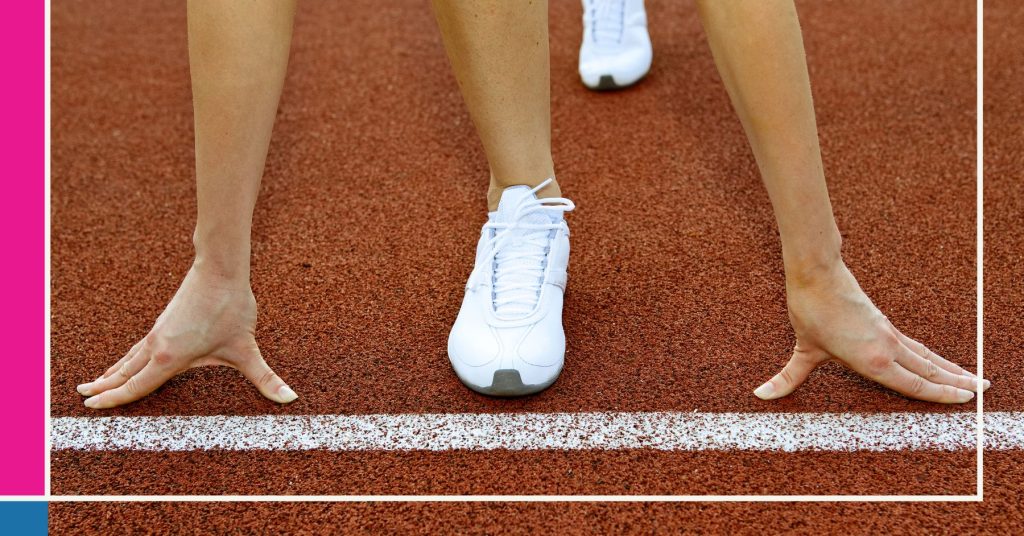Starting to run at 50 might feel intimidating, but it’s important to remember that age is just a number. Whether you’re new to running or getting back into it, the benefits of running at 50 and beyond are well within your reach. From improving cardiovascular health to boosting mental clarity, running offers a holistic approach to enhancing your overall well-being.
At Midlife Runners Paradise, we understand the unique challenges that come with running after 50, such as concerns about injury, stamina, and motivation. That’s why we’ve developed the Midlife Runners Paradise (MRP) framework—a comprehensive system that combines gentle running and walking, strength training, healthy nutrition, and mental resilience. This approach ensures that you’re not just adding years to your life, but life to your years.
Embracing running at 50 is more than just a physical activity; it’s a gateway to transforming your mind and body. With the right support and guidance, you can build a sustainable and rewarding running routine that enhances your health, boosts your confidence, and brings joy to your daily life.
Understanding the Benefits of Running at 50
When considering how to start running at 50, it’s crucial to understand the significant benefits that running can offer. For both men and women, running over 50 can lead to remarkable improvements in physical, mental, and emotional well-being.
First, running is a powerful tool for cardiovascular health. As you age, maintaining a strong heart becomes increasingly important, and regular running helps lower blood pressure, improve circulation, and reduce the risk of heart disease. For those new to running at 50, even a moderate jogging routine can make a big difference in overall heart health.
Weight management is another key benefit of running after 50. As metabolism slows with age, staying active becomes essential for maintaining a healthy weight. Running burns calories efficiently, helping to prevent unwanted weight gain and the associated risks of obesity-related conditions like diabetes.
Mentally, running at 50 can be a game-changer. Exercise, particularly running, is known to boost mental clarity, improve mood, and combat stress. For women, running after 50 can also help manage menopausal symptoms, such as mood swings and fatigue, offering a natural way to navigate these changes.
Finally, running is a proactive step in reducing the risk of chronic diseases. Regular physical activity helps control blood sugar levels, strengthens bones, and enhances joint mobility, all of which are critical in preventing conditions like osteoporosis and arthritis.
In summary, running over 50 is not just about staying fit—it’s about enhancing your overall quality of life. By incorporating running into your routine, you can enjoy a healthier heart, a sharper mind, and a stronger body, setting the foundation for a more vibrant and active future.
Getting Started: How to Start Running at 50
Starting a running routine at 50 is a rewarding journey that begins with a few simple steps. Here’s a step-by-step guide on how to start running at 50, designed to help you ease into this new lifestyle and build a sustainable habit.
1. Start with Walking
If you’re new to running, begin with walking. Walking helps you build the necessary endurance and prepares your muscles and joints for the impact of running. Aim for 20-30 minutes of brisk walking three to four times a week. Once you’re comfortable, start incorporating short running intervals into your walks.
2. Gradually Increase Running Intervals
As you progress, gradually increase the running intervals. For example, try a run-walk method, where you run for 1 minute and walk for 4 minutes. Over time, reduce the walking time and increase the running duration. This gradual approach allows your body to adapt, reducing the risk of injury while boosting your confidence.
3. Listen to Your Body
One of the most important tips when beginning running at 50 is to listen to your body. Pay attention to how you feel during and after each run. If you experience pain or discomfort, it’s okay to slow down or take a rest day. Pushing too hard too soon can lead to injuries, so be patient and give your body the time it needs to adjust.
4. Set Realistic Goals
Setting realistic goals is key to staying motivated. Start with small, achievable milestones, like running for 10 minutes without stopping or completing your first 5K. Celebrate these accomplishments and gradually build towards longer distances or faster times. Remember, progress is progress, no matter how small it seems.
5. Invest in Proper Footwear
Proper footwear is essential for preventing injuries and ensuring comfort as you start running at 50. Invest in a good pair of running shoes that provide adequate support, cushioning, and fit your foot type. Consider visiting a specialty running store for a fitting to ensure you get the right shoes for your needs.
6. Stay Hydrated
Hydration is crucial, especially as your body adapts to a new level of activity. Make sure to drink water before, during, and after your runs to stay hydrated. Proper hydration helps with performance and recovery, keeping you energized and reducing the risk of cramps or fatigue.
Starting to run at 50 is about building a sustainable, enjoyable habit that supports your overall well-being. By taking it step by step, listening to your body, and setting achievable goals, you’ll be on your way to a healthier, more active lifestyle in no time. Remember, patience and consistency are your best allies on this journey.
Strength Training and Cross-Training for Runners Over 50
Incorporating strength training and cross-training into your running regimen is essential, especially when running at 50 or older. As we age, our bodies naturally lose muscle mass and flexibility, making it crucial to include activities that build strength and enhance overall fitness.
1. The Importance of Strength Training
Strength training plays a key role in supporting your running performance and reducing the risk of injury. The 80/20 approach to strength training—where 80% of your effort focuses on low-impact, full-body exercises and 20% on more intense strength work—is particularly effective for runners over 50. This balanced method helps build muscle without overloading your body.
Core exercises, such as planks and bridges, are especially beneficial as they improve stability and support good running form. Additionally, leg exercises like squats and lunges strengthen the muscles around your knees and hips, helping prevent common injuries associated with running over 50.
2. Benefits of Cross-Training
Cross-training adds variety to your fitness routine and provides a break from the repetitive motion of running. Low-impact activities like swimming, cycling, or yoga are excellent options. These activities help maintain cardiovascular fitness while reducing the strain on your joints.
For those interested in trail running over 50, cross-training can also help you develop the balance and agility needed to navigate uneven terrain. Yoga, in particular, enhances flexibility and mindfulness, complementing both road and trail running.
3. Flexibility and Recovery
Incorporating flexibility exercises, such as stretching or foam rolling, into your routine is crucial for maintaining mobility and aiding recovery. Regular stretching helps improve range of motion, which is particularly important when running after 50, as it can reduce stiffness and keep your muscles supple.
By combining strength training and cross-training with your running routine, you’ll not only enhance your performance but also protect your body, making running at 50 a more enjoyable and sustainable experience.
Nutrition and Hydration Tips for Running After 50
Good nutrition and proper hydration are essential components of any successful running routine, especially when running after 50. As our bodies change with age, the need for balanced, nutrient-rich meals becomes even more important to support both performance and overall health.
1. Focus on a Balanced Diet
For runners over 50, a balanced diet is key to maintaining energy levels and promoting recovery. Prioritize whole foods rich in vitamins, minerals, and antioxidants. Lean proteins, such as chicken, fish, and legumes, help repair muscles after runs. Complex carbohydrates, like whole grains and sweet potatoes, provide sustained energy, while healthy fats from sources like avocados and nuts support joint health and reduce inflammation.
2. Include Specific Nutrients
Certain nutrients are particularly beneficial when running at 50. Calcium and vitamin D are crucial for bone health, helping to prevent osteoporosis. Omega-3 fatty acids, found in fish and flaxseeds, can reduce joint stiffness and improve heart health. Additionally, B vitamins support energy metabolism, which is vital for maintaining stamina during runs.
3. Stay Hydrated
Proper hydration is vital for midlife runners. Dehydration can lead to fatigue, cramps, and slower recovery times. Aim to drink water consistently throughout the day, and consider electrolyte-rich drinks during longer runs to replenish lost minerals. Listen to your body’s thirst signals, and adjust your fluid intake based on your activity level and weather conditions.
By focusing on balanced nutrition and staying well-hydrated, you’ll not only enhance your running performance but also support your overall health, making running after 50 a sustainable and enjoyable part of your lifestyle.
Mental Resilience and Motivation: Running After 50
Running after 50 isn’t just about physical strength—mental resilience plays a crucial role in starting and maintaining a consistent running habit. Developing the right mindset is key to staying motivated and overcoming the mental barriers that can arise, especially when you’re beginning a new fitness journey later in life.
1. Set Clear, Achievable Goals
One effective way to stay motivated is by setting clear, achievable goals. Whether it’s running your first 5K or simply completing three runs a week, having specific objectives gives you something to work toward. Celebrate each milestone, no matter how small, to maintain a positive mindset.
2. Overcome Mental Barriers
It’s common to encounter self-doubt or fear of failure when running at 50. To overcome these mental barriers, remind yourself that progress takes time and that it’s okay to have setbacks. Focus on the benefits you’re gaining, such as improved health and mental clarity, rather than comparing yourself to others or expecting immediate results.
3. Incorporate Mindfulness Practices
Mindfulness practices, such as meditation or deep breathing exercises, can complement your running routine. These practices help reduce stress, improve focus, and enhance your overall running experience. Consider setting aside a few minutes before or after your run to practice mindfulness, which can help clear your mind and strengthen your mental resilience.
4. Stay Connected and Supported
For women running after 50, finding a supportive community can be particularly motivating. Whether through a local running group or online forums, connecting with others who share similar goals can provide encouragement and accountability. Sharing your journey with others can help you stay committed and enjoy the process more fully.
By focusing on mental resilience and staying motivated, you’ll find that running after 50 can be a fulfilling and sustainable part of your life, leading to long-term health and happiness.
Trail Running Over 50: A New Adventure
Trail running over 50 offers a refreshing and rewarding alternative to traditional pavement running. Embracing the natural environment not only enhances your running experience but also provides numerous benefits that are especially valuable for midlife runners.
1. Advantages of Trail Running
One of the primary advantages of trail running is the reduced impact on your joints. The softer, uneven surfaces of trails are gentler on your knees and hips compared to hard pavement, which is crucial when beginning running at 50. Additionally, being surrounded by nature can significantly boost your mental well-being, offering a sense of peace and relaxation that’s hard to find in urban settings.
2. Transitioning Safely to Trail Running
If you’re new to trail running, start by incorporating it into your routine gradually. Begin with shorter, less technical trails to get used to the uneven terrain. It’s important to invest in trail-specific running shoes that provide better grip and stability. Pay attention to your footing and take it slow on rocky or slippery paths to prevent falls or injuries.
3. Enjoying the Experience
Trail running is as much about the journey as it is about the workout. Enjoy the scenery, breathe in the fresh air, and take breaks when needed. This slower, more mindful approach can make running after 50 a more enjoyable and sustainable practice, helping you stay active and engaged in your fitness journey.
By exploring trail running, you open up a new adventure that can reinvigorate your passion for running and enhance both your physical and mental health.
Conclusion: Embrace the Journey and Thrive Beyond 50
Learning how to start running at 50 is a journey that offers countless rewards, far beyond just physical health. From improved cardiovascular fitness to enhanced mental clarity and resilience, running after 50 empowers you to thrive in every aspect of your life.
Remember, it’s never too late to lace up your running shoes and take that first step. Whether you’re running over 50 on city streets or exploring new trails, the key is to start at your own pace and enjoy the process. Embrace this journey with patience and persistence, knowing that each run brings you closer to a healthier, happier you.
For those seeking support and community, consider joining Midlife Runners CIC, where you can connect with others who share your goals and challenges. Together, we can make running after 50 a fulfilling and transformative experience.





